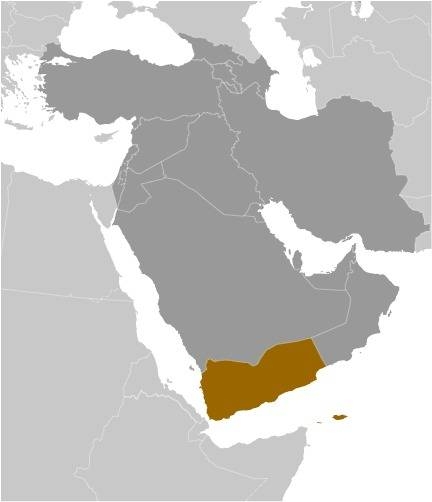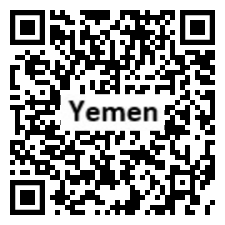Country Summary




Introduction
Background
The Kingdom of Yemen (colloquially known as North Yemen) became independent from the Ottoman Empire in 1918 and in 1962 became the Yemen Arab Republic. The British, withdrew in 1967 from what became the People's Republic of Southern Yemen (colloquially known as South Yemen). The two countries were formally unified as the Republic of Yemen in 1990.
Geography
Area
total: 527,968 sq km
land: 527,968 sq km
water: 0 sq km
Climate
mostly desert; hot and humid along west coast; temperate in western mountains affected by seasonal monsoon; extraordinarily hot, dry, harsh desert in east
Natural resources
petroleum, fish, rock salt, marble; small deposits of coal, gold, lead, nickel, and copper; fertile soil in west
People and Society
Population
30,984,689 (2022 est.)
Ethnic groups
predominantly Arab; but also Afro-Arab, South Asian, European
Languages
Arabic (official); note - a distinct Socotri language is widely used on Socotra Island and Archipelago; Mahri is still fairly widely spoken in eastern Yemen
Religions
Muslim 99.1% (official; virtually all are citizens, an estimated 65% are Sunni and 35% are Shia), other 0.9% (includes Jewish, Baha'i, Hindu, and Christian; many are refugees or temporary foreign residents) (2020 est.)
Population growth rate
1.88% (2022 est.)
Government
Government type
in transition
Capital
name: Sanaa
Executive branch
chief of state: Chairperson, Presidential Council Rashad Muhammad al-ALIMI, Dr. (since 19 April 2022); Vice Chairperson, Presidential Council Sultan al-ARADA (since 19 April 2022); Vice Chairperson, Presidential Council Faraj Salmin al- BAHSANI, Brig. Gen. (since 19 April 2022); Vice Chairperson, Presidential Council Abdullah Al-Alimi BA WAZIR (since 19 April 2022); Vice Chairperson, Presidential Council Uthman Hussain Faid al-MUJALI (since 19 April 2022); Vice Chairperson, Presidential Council TARIQ Muhammad Abdallah Salih, Brig. Gen. (since 19 April 2022); Vice Chairperson, Presidential Council 'Abd-al-Rahman ABU ZARA'A al-Muharrami al-Yafai, Brig. Gen. (since 19 April 2022); Vice Chairperson, Presidential Council Aydarus Qasim al-ZUBAYDI, Maj. Gen. (since 19 April 2022)
head of government: Chairperson, Presidential Council Rashad Muhammad al-ALIMI, Dr. (since 19 April 2022); Vice Chairperson, Presidential Council Sultan al-ARADA (since 19 April 2022); Vice Chairperson, Presidential Council Faraj Salmin al- BAHSANI, Brig. Gen. (since 19 April 2022); Vice Chairperson, Presidential Council Abdullah Al-Alimi BA WAZIR (since 19 April 2022); Vice Chairperson, Presidential Council Uthman Hussain Faid al-MUJALI (since 19 April 2022); Vice Chairperson, Presidential Council TARIQ Muhammad Abdallah Salih, Brig. Gen. (since 19 April 2022); Vice Chairperson, Presidential Council 'Abd-al-Rahman ABU ZARA'A al-Muharrami al-Yafai, Brig. Gen. (since 19 April 2022); Vice Chairperson, Presidential Council Aydarus Qasim al-ZUBAYDI, Maj. Gen. (since 19 April 2022)
Legislative branch
description: bicameral Parliament or Majlis consists of:
Shura Council or Majlis Alshoora (111 seats; members appointed by the president; member tenure NA)
House of Representatives or Majlis al Nuwaab (301 seats; members directly elected in single-seat constituencies by simple majority vote to serve 6-year terms)
Economy
Economic overview
low-income Middle Eastern economy; infrastructure, trade, and economic institutions devastated by civil war; oil/gas-dependent but decreasing reserves; massive poverty, food insecurity, and unemployment; high inflation
Real GDP (purchasing power parity)
$73.63 billion (2017 est.)
Real GDP per capita
$2,500 (2017 est.)
Agricultural products
mangoes/guavas, potatoes, sorghum, onions, milk, poultry, watermelons, grapes, oranges, bananas
Industries
crude oil production and petroleum refining; small-scale production of cotton textiles, leather goods; food processing; handicrafts; aluminum products; cement; commercial ship repair; natural gas production
Exports
$384.5 million (2017 est.)
Exports - partners
China 53%, Saudi Arabia 10%, United Arab Emirates 7%, Australia 5% (2019)
Exports - commodities
crude petroleum, gold, fish, industrial chemical liquids, scrap iron (2019)
Imports
$4.079 billion (2017 est.)
Imports - partners
China 25%, Turkey 10%, United Arab Emirates 9%, Saudi Arabia 8%, India 7% (2019)
Imports - commodities
wheat, refined petroleum, iron, rice, cars (2019)
Exchange rates
Yemeni rials (YER) per US dollar -
Page last updated: Tuesday, August 02, 2022
